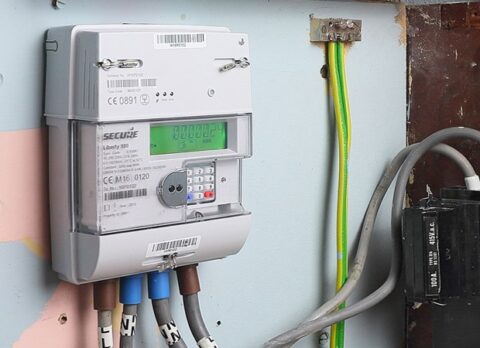Smart meters are being rolled out to all homes to meet the future demands of the gas and electricity system brought about by the changes in the way we live over the next 25 years.


A B
Picture A is a smart meter. It looks like a normal digital meter and you can still take a reading from the meter which will be shown in the green window in the middle of the meter. Picture B, although often incorrectly called a smart meter, is an In-House Display Unit (IHD) giving a digital display of the data being measured by the meter.
The smart meter via the IHD provides information not currently available with a normal meter. It provides information on the customer’s usage and costs on a daily, weekly, monthly and yearly basis. Some IHDs enable customers to monitor their daily usage against a customer set target. And the IHD also sends meter readings to the energy supplier directly.
There are a wide range of estimates as to how much money smart meters could save the customer. The main lesson is that smart meters provide information which can help customers to alter the way they use their gas and electricity. By changing what they do in the home, savings could be made. If, after having a smart meter installed, the customer takes no action on the information of cost and usage provided, there would be no savings. However, if you see the effect on your IHD when you switch on, for example, a 150-watt bulb in a light – you will never have such a large wattage bulb in the home again and will switch quickly to low energy bulbs everywhere in the home. These sorts of actions could save money.
Smart meters, via the IHD, provide the customer with usage information at any time. It is no longer necessary to scrabble under the stairs to read the meter. Additionally, the smart meter sends the customer’s meter readings directly to the energy supplier when required without any intervention from the customer. This eliminates the need for estimated bills. Customers with smart meters only receive bills based on actual readings.
In the future, smart meters will provide a wider range of electrical tariffs such as a cheap night-time charging tariff and maybe a mid-afternoon `top-up` tariff – all supportive of the increased use of electrical cars. We can expect increasing use of Smart Appliances like fridges and freezers which can be controlled by the smart meter to take electricity when it is cheaper due to lower demand. Increasingly, new houses will be predominantly fitted with smart meters, and when old meters are replaced, smart meters will be fitted preferentially. Eventually most homes will have smart meters.
(Note that eligibility may vary to the details shown in this article and savings require customer action) (For further information on smart meters, contact Citizens Advice on 01452 527202)

2 thoughts on “WHAT ARE SMART METERS – INFORMATION FROM CITIZENS ADVICE”
Joseph Paul
Can you have a combined smart mete for Gas and electricity and if so from where can I obtain this
Council Administrator
Please contact your energy supplier for this information.